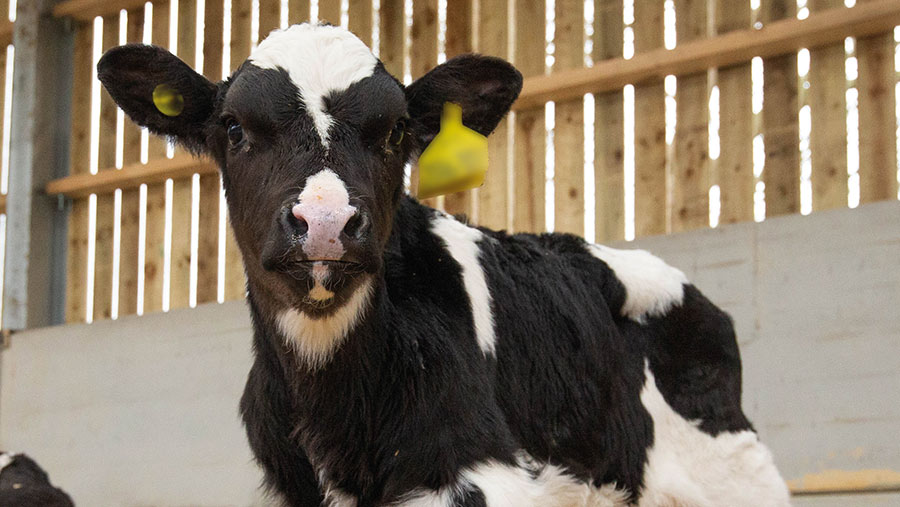Herd futures survey reveals top farmer priorities
 © Tim Scrivener
© Tim Scrivener Nearly 90% of UK dairy farmers agree or strongly agree that being able to use sexed semen to guarantee a greater than 95% chance of a heifer calf is a game changer, a survey of UK dairy farmers has found.
A total of 247 farmers took part in the herd futures survey, compiled by genetics company Cogent, dairy nutrition specialist Volac and MSD Animal Health, in March and April.
Farmers were asked what was most important to ensure the future productivity of their dairy replacements and the sustainability of their herds.
See also: How genomic testing of heifers can improve profitability
Discussing the results, Cogent’s national business development manager, Ben Hogg, said conventional semen is rarely used now because of higher conception rates with sexed semen, consumer pressure and schemes such as Arla’s “Every calf has a value”.
“We’re looking roughly at 3% conventional semen sales by the end of the year. It’s a huge swing from where we were four or five years ago,” he said.
Genomics
However, when asked about genomic testing, 38% of respondents said they didn’t understand what it was or didn’t think it was worth doing. It was clear that a large proportion of farmers was failing to appreciate the benefits of genomic testing, and what it could do for their farms, said Mr Hogg.
“We know heifer rearing is a huge cost on the farm, so having the ability to select or deselect heifers based on their genomic information is crucial, so we can make sure we’re breeding from the right animals, producing the best heifers we can, and increasing profitability, efficiency and sustainability on farm,” he added.
Nutrition
When asked how on-farm advisers could better support the drive for increased youngstock productivity, improving colostrum management and nutrition was second only to preventing disease.
“The only way to ensure a heifer has adequate body size to calve down at 24 months – which numerous studies have shown is the age they have the best chance of achieving their full lifetime potential – is to manage the nutrition, health and environment of the system,” said Jessica Cooke, research and development manager at Volac.
To achieve this, farmers need to set targets to ensure heifers are on right growth curve to maximise the chances of growing into better cows, said Dr Cooke. Feed efficiency is at its highest in the milk-feeding period, at 50% under ideal conditions, she added.
Disease prevention
Ninety-nine percent of farmers responding to the survey agreed that preventing disease in youngstock ensures productivity in later life, and 73% rated vaccination as a critical aspect of infectious scour and bovine respiratory disease (BRD).
“We know these two diseases have a big effect on growth rates and later-life productivity,” said MSD Animal Health marketing manager Rob Simpson. “We also know that they can feed into each other – a calf that suffers from scour is more likely to suffer from BRD.
“However, there is a gap in vaccination penetrations for both these diseases – 17% [uptake] for scour and 36% for BRD, according to AHDB data. This shows there is headroom for improving the amount of disease prevention on farms.”
The farm vet was considered the key adviser for increasing productivity by 73% of farmers. This farmer-vet engagement presents an opportunity to improve the amount of disease prevention, using key times of year, such as regular herd health planning discussion and pre-disease season protocol reviews, said Mr Simpson.
“Immunity-led prevention will help protect the genetic investment farmers are making and maximise the benefit of good nutrition in their youngstock.”
